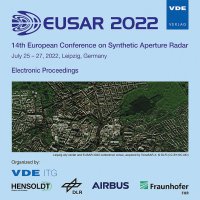Dual-Channel working mode of LuTan-1 SAR System
Konferenz: EUSAR 2022 - 14th European Conference on Synthetic Aperture Radar
25.07.2022 - 27.07.2022 in Leipzig, Germany
Tagungsband: EUSAR 2022
Seiten: 6Sprache: EnglischTyp: PDF
Autoren:
Lin, Haoyu; Zhang, Heng (Department of Space Microwave Remote Sensing System, Aerospace Information Research Institute, Chinese Academy of Sciences, Beijing, China & School of Electronic, Electrical and Communication Engineering, University of Chinese Academy of Sciences, Beijing, China)
Liu, Dacheng; Chen, Yafeng; Liu, Kaiyu (Department of Space Microwave Remote Sensing System, Aerospace Information Research Institute, Chinese Academy of Sciences, Beijing, China)
Inhalt:
LuTan-1 (LT-1) is an innovative spaceborne radar earth observation mission including two satellites equipped with synthetic aperture radar (SAR) which will be launched in 2022. Active phased array antennas that can be divided into two physical channels are equipped on each satellite. The signal can be transmitted through the full antenna without broadening and recorded by each channel. Therefore, two methods can be used to preprocess the dual-channel receiving signals, referred to as dual-channel echo reconstruction and dual-channel echo synthesis. The former is inherited from the traditional high-resolution wide-swath mode and the latter is a method that takes coherent superposition as the reference. This paper analyzes the differences between the two methods in system performance, including the azimuth ambiguityto- signal ratio, noise equivalent σ zero, and the performance of block adaptive quantization. Afterwards, the test data acquired by the ground validation system of the LT-1 are used for the hardware-in-the-loop simulation to compare the imaging quality between the two methods. The respective characteristics of the two methods provide significant referencing for the ground processing system of the LT-1.


